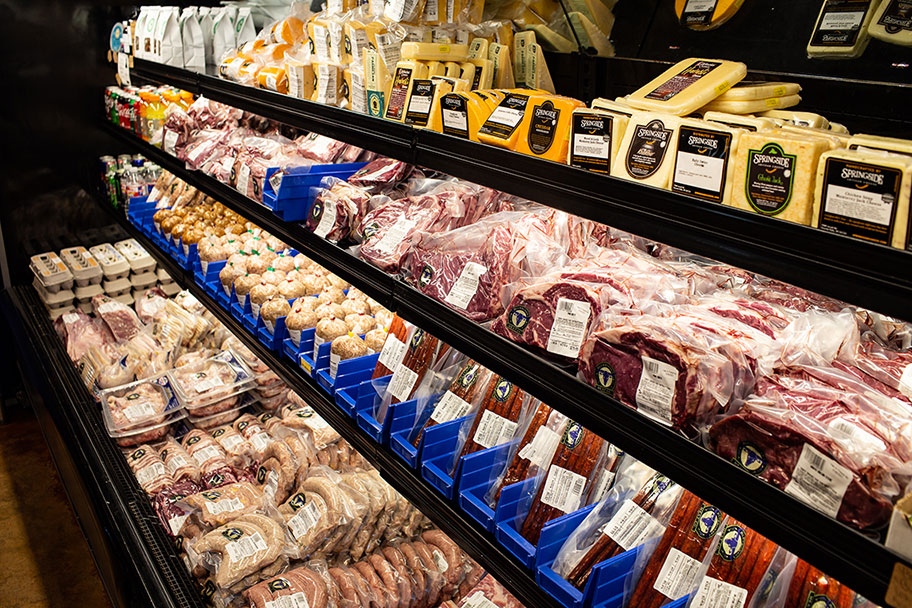Discover Fresh Cuts at Bagley Farms Meat Market Edwardsville IL for Your Following barbeque
Discover Fresh Cuts at Bagley Farms Meat Market Edwardsville IL for Your Following barbeque
Blog Article
Uncover the Art of the Butcher's Cut in a Modern Meat Market
In the ever-evolving landscape of modern-day meat markets, the butcher's cut has actually transcended its conventional roots, merging age-old craftsmanship with contemporary methods. What genuinely sets the contemporary butcher apart is their capability to build a deeper link between customers and the beginnings of their meat.
Evolution of Butchery Techniques
The evolution of butchery methods reflects an abundant tapestry of technology and adjustment driven by developments in innovation, changes in consumer demand, and a much deeper understanding of meat scientific research. Historically, butchery was a craft gave through generations, with approaches honed over centuries to optimize return and taste. The industrial change ushered in mechanization, changing typical methods and allowing massive processing.
The mid-20th century saw butchery techniques additionally refined by scientific understandings right into muscle biology and meat aging, enhancing both tenderness and taste. Innovations like vacuum cleaner packaging and refrigeration expanded product shelf-life, allowing butchers to diversify offerings and enhance quality assurance. This duration likewise marked the increase of specific equipment, such as band saws and meat slicers, which boosted precision and performance in meat handling.

The 21st century has actually presented electronic technology into the butchery realm. Computerized systems now assist in tracking pet provenance and maximizing cuts to meet specific client choices. Furthermore, a renewal in artisanal butchery has actually arised, mixing traditional abilities with modern-day understanding to cater to customers seeking moral and lasting meat options. This evolution underscores a vibrant interplay between practice and advancement, meeting contemporary needs while protecting the craft's heritage.
Recognizing Meat Cuts
Recognizing the details of meat cuts is essential for both butchers and customers seeking high quality and value. For butchers, exact cuts show skill and regard for the craft, making sure marginal waste and optimal return.

Comprehending muscle mass structure is crucial; muscle mass utilized extra frequently by the pet have a tendency to be harder and are best fit for sluggish cooking methods, while less-used muscle mass, like those found in the loin, are much more tender and ideal for grilling or roasting. Familiarity with these distinctions empowers consumers to make educated selections, improving their culinary ventures.
Selecting Quality Meat
Picking the best meat includes even more than just picking an aesthetically appealing item from the display screen. The art of picking quality meat needs a critical eye and knowledge of certain characteristics that signify freshness and excellence.
Secondly, consider the marbling, which describes the white streaks of fat within the muscle. Proper marbling is a vital sign of tenderness and taste, as it melts during cooking, enhancing the meat's juiciness. Remember, higher marbling frequently correlates with superior top quality cuts, such as USDA Prime.
Structure is an additional critical variable; meat should really feel solid to the touch, not slimy or excessively soft. In addition, bear in mind the scent. Fresh meat should have a clean, neutral odor, without any sour or off-putting click site smells.
Coupling Cuts With Cooking Approaches

Alternatively, tougher cuts like brisket and chuck roast are rich in collagen, which damages down right into gelatin when cooked gradually. These cuts are suitable for braising or sluggish roasting, allowing the meat to soften over time and create deep, complex flavors. Likewise, cuts such as brief ribs and pork shoulder prosper with slow-cooking techniques, where prolonged cooking times transform their durable structures right into delicious meals.
Lamb shanks and oxtail, which call for extended cooking to soften, are ideal prospects for stewing or slow-moving simmering. These approaches coax out abundant, passionate tastes while preserving wetness. By understanding the special features of each cut, chefs and home cooks alike can boost their culinary creations, guaranteeing each meal is both satisfying and memorable.
The Butcher's Function Today
Browsing the developing landscape of the modern-day meat market, the butcher's role today expands past plain preparation of cuts. Contemporary butchers are culinary craftsmens, teachers, and advocates for lasting practices. They link the space in between the farm and the fork by ensuring moral sourcing, understanding animal husbandry, and focusing on openness in the supply chain. This shift reflects the growing consumer demand for quality over quantity, where provenance and pet well-being are vital.
Along with crafting precise cuts, butchers currently involve my explanation straight with customers, providing cooking advice and tailoring choices to suit individual needs and choices. Their knowledge in meat aging, marbling, and taste profiles encourages consumers to make informed choices, enhancing their culinary experiences. This individualized service exemplifies the butcher's advancing role as a relied on advisor in the kitchen area.
Moreover, butchers are pivotal in reducing waste, utilizing entire animals to produce varied items such as sausages and stocks. This thorough strategy not only respects the animal however also straightens with modern sustainability goals. This way, the modern-day butcher embodies both practice and development, adjusting to an ever-changing market while maintaining the creativity and stability of their craft.
Verdict
The contemporary butcher's craft elaborately weaves typical strategies with modern advancements, highlighting sustainable practices and honest sourcing. Mastery in recognizing varied meat cuts and quality signs encourages butchers to provide enlightened recommendations, aligning details cuts with optimum food preparation methods. This competence not only raises culinary experiences but likewise more tips here reinforces the link between customers and the origins of their food. By recognizing historical methods while embracing contemporary needs, the butcher's role stays essential in today's advanced meat market (bagley farms meat market edwardsville il).
Report this page